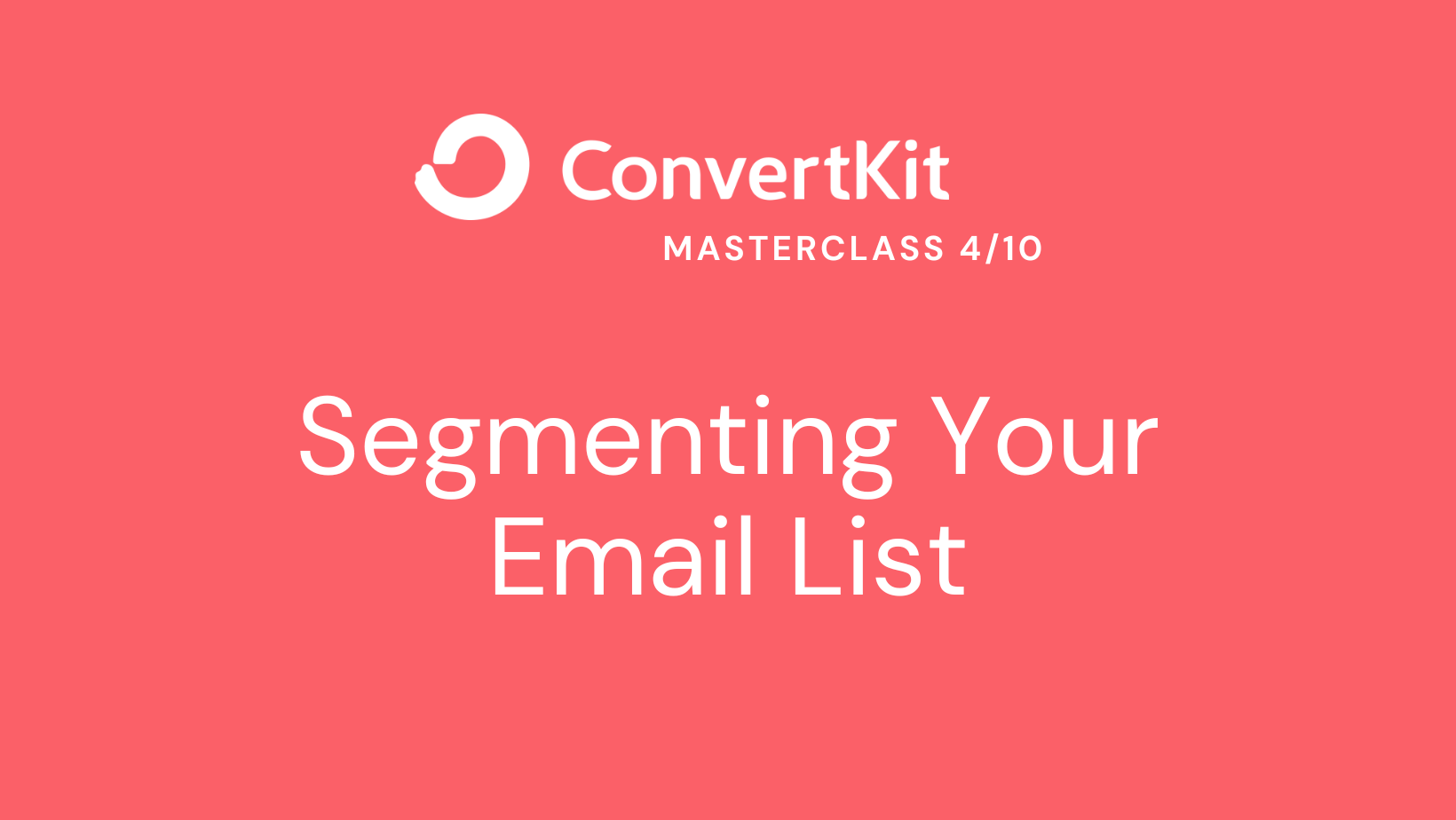Test and Refine Your Segmentation
Segmenting your email list is an ongoing process that requires constant evaluation and refinement to ensure its effectiveness. ConvertKit provides you with the tools to test and optimize your segmentation strategy, allowing you to deliver more targeted and relevant content to your subscribers. In this section, we’ll explore how to test and refine your segmentation in ConvertKit to maximize its impact on your email marketing campaigns.
Try ConvertKit
ConvertKit is the only email marketing platform we use, and will ever use.
ConvertKit is our #1 recommended email marketing platform because it has been built with care to the exact needs of creators building online businesses. Their user experience is very user-friendly. And segmenting our subscribers into focused groups so that we can deliver content specific to their needs has never been easier. We’re all-in on ConvertKit.
Define Testing Objectives
Before you start testing your segmentation, it’s essential to define your objectives. Consider what you want to achieve through your segmentation strategy. Are you aiming to increase open rates, click-through rates, conversions, or overall engagement? Clearly defining your objectives will help you focus your testing efforts and measure success accurately.
A/B Testing
A/B testing is a powerful technique that allows you to compare the performance of different segmentation approaches or variations within a segment. Here’s how you can utilize A/B testing in ConvertKit:
- Select Testing Variables: Identify the variables you want to test, such as different segmentation criteria, tags, custom fields, or email content. For example, you can test whether segmenting subscribers based on their geographic location or their engagement level yields higher open rates.
- Divide Your Sample Groups: Split your subscribers into two or more random sample groups. Apply different segmentation approaches or variations to each group. For instance, you might segment Group A based on purchase history and Group B based on engagement levels.
- Measure and Compare Results: Monitor the performance metrics of each sample group, such as open rates, click-through rates, and conversions. Compare the results to determine which segmentation approach or variation yields the best outcomes.
- Iterate and Optimize: Based on the results of your A/B tests, refine your segmentation strategy accordingly. Implement the successful segmentation approach across your entire email list or continue testing with new variations to continually optimize your results.
Analyze Subscriber Engagement
Regularly analyze subscriber engagement metrics to gain insights into the effectiveness of your segments. Look for patterns and trends among different segments to understand their preferences and behaviors. Here are some key metrics to consider:
- Open Rates: Compare open rates across different segments to identify segments that consistently perform well or those that may require further refinement.
- Click-Through Rates: Evaluate the click-through rates within each segment to determine the level of engagement and interest. Identify segments with higher click-through rates as they indicate strong alignment between the content and the subscribers’ preferences.
- Conversion Rates: Measure the conversion rates for different segments to understand the impact of your segmentation on driving desired actions, such as purchases, sign-ups, or downloads.
Feedback and Surveys
Don’t overlook the importance of gathering feedback directly from your subscribers. Surveys or feedback forms can provide valuable insights into their preferences, needs, and satisfaction with your email content. Use ConvertKit’s forms or integrate with survey tools to collect feedback and refine your segmentation strategy based on the responses received.
Segment Optimization
As you gather insights and analyze the performance of your segments, continuously optimize and refine them. Consider the following approaches for segment optimization:
- Narrowing or Expanding Segments: Based on engagement metrics and subscriber feedback, evaluate whether your segments need to be more specific or broader. Fine-tuning the criteria can lead to more accurate targeting and better engagement.
- Creating New Segments: Identify opportunities to create new segments based on emerging trends, subscriber behaviors, or specific campaigns you plan to run. These new segments can help you tailor your content even further and increase relevancy.
- Cleaning up Tags and Custom Fields: Regularly review and clean up your tags and custom fields to ensure they remain relevant and organized. Remove tags that are no longer necessary and refine your segmentation criteria to avoid unnecessary complexity.
Testing and refining your segmentation strategy in ConvertKit is crucial for optimizing your email marketing efforts. By conducting A/B tests, analyzing subscriber engagement metrics, gathering feedback, and continuously optimizing your segments, you can deliver more personalized and targeted content to your subscribers, leading to increased engagement and conversions.
Conclusion
Segmenting your email list with Convertkit is essential for sending targeted messages to your subscribers. By defining your segmentation criteria, using tags and custom fields, automating your segmentation, and testing and refining your segmentation, you can ensure that your subscribers receive relevant messages that keep them engaged with your brand. For more email marketing tips, be sure to check out our other posts in this Convertkit guide.
Email List Building Video Workshop
Watch this free step by step video workshop by Isa Adney, Business Owner and Trainer at ConvertKit.

Leave a Reply Cancel reply